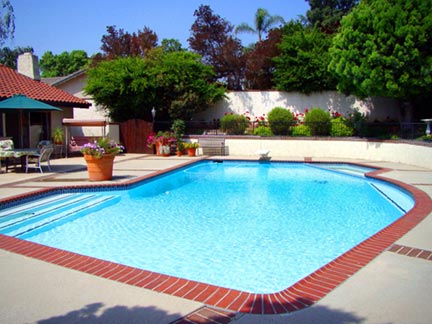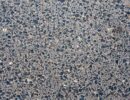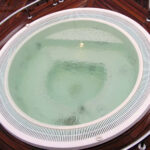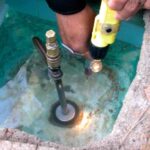Expert advice on winterizing a swimming pool and handling seasonal maintenance, such as starting up a pool at the beginning of summer.
In warmer climates, seasonal pool maintenance is virtually nonexistent. Except perhaps for boosting the temperature during cooler months, you can use your pool or spa year-round with no difficulty. In colder climates where water freezes, though, or even in temperate climates where a pool or spa will remain dormant for long periods, you need to take proper care of your investment and make sure it’s ready for use when warm weather returns.
Winterizing a Swimming Pool
If you live in an area that experiences freezing temperatures, you’ll need to clear the water out of your pool’s plumbing at the end of the swimming season. Frozen water won’t harm the pool structure itself, but it can damage the pipes. Use an air compressor to blow water out of the lines, following the manufacturer’s instructions.
Also drain as much water as possible from the heater and filter. If any water remains, add non-toxic antifreeze–which differs from automotive antifreeze and is available from pool-supply stores. Disconnect the pump and heater. Then disconnect, clean, and store any chemical feeders.
Thoroughly vacuum and clean the pool and empty the skimmer baskets. Close the valve on the skimmer line and lower the water level to about 18 inches below the coping. Superchlorinate to remove chloramines. Finally–and most important of all–tightly cover the pool or spa. This will keep debris from accumulating in the water, making it vastly easier to open the pool in the spring.
If you’ll continue using your spa during the cold weather, just continue your regular maintenance. On days that are too cold for outdoor soaking, lower the thermostat but keep the circulation system running to prevent the pipes from freezing. In the event of a severe freeze, drain all the plumbing but leave the spa full.
Opening a Swimming Pool for the Season
If properly prepared for the winter, a pool or spa can be opened during the spring with minimum effort. The most essential step is to clean the surrounding area–hosing and sweeping dirt and debris away–before opening the cover. If you don’t clean first, the winter’s accumulation will empty into the pool.
Return the pool’s water level to normal using a garden hose. Any equipment such as the pump or heater that was disconnected will need reconnecting.
Open the valve on the skimmer line so that water flows through the circulation system again. When everything is functioning, balance the water by testing the pH and total alkalinity, and then super-chlorinate. Run the pump 24 hours a day, reducing the run by an hour or two each day until the water is perfectly balanced; this may take a week or more.
If you live in an area that has at least two months of temperatures below freezing, you may be able to have your in-ground swimming pool do double duty as an ice-skating rink. To transform it, winterize the pool (see above left), lowering the water level as described.
Float a large vinyl liner on the water that extends onto the deck for about 2 to 3 feet and hold it in place with water-filled plastic jugs or sandbags. Fill the liner with water to a depth of at least 4 inches and allow it to freeze solid. Four or more inches of ice won’t harm the pool at all.
How to Prepare Your Pool for the First Swim
Construction is complete, your new pool is filled, and it’s tempting to take your first swim. But, no matter what the material— fiberglass, vinyl, or concrete—chances are good it has accumulated a good bit of dust and debris, which need eliminating before it’s safe to take the plunge.
To clean the water, the pool’s filter must be run non-stop until the water appears clear. This can take anywhere from a day to a week. It will also require diligent monitoring of the filter, which should be cleared regularly.
Once the water is clear, it then needs to be balanced and sanitized. Only then is it safe to start swimming. From that point, the filter should be run about an hour a day or until the water again looks clear.
![]()








 Don Vandervort writes or edits every article at HomeTips. Don has:
Don Vandervort writes or edits every article at HomeTips. Don has:




